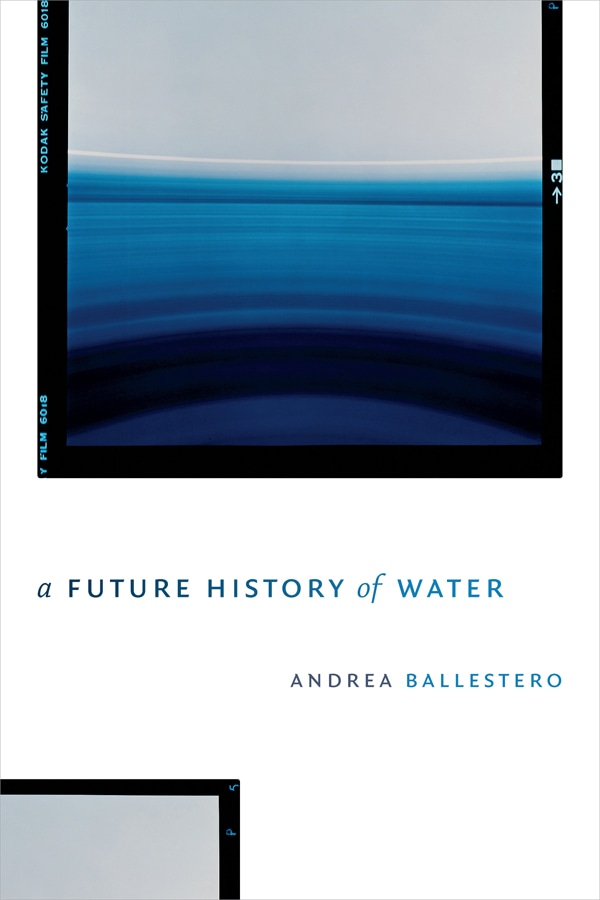As I finished reading Ballestero’s A Future History of Water, the world observed World Water Day 2021. Organized by the United Nations, it has been observed annually each March since 1993, and is described as a means of “focusing attention on the global water crisis”. This year’s focus was Valuing Water, which, amongst other local events, meant inviting global publics to reflect on what water meant to them by tagging contributions with #Water2me. Perhaps the “one true value of water” (WWD 2021:1) could be found on blogs, LinkedIn, Instagram, Facebook, Twitter, or Reddit?

Devices
As a fellow ethnographer of bureaucracies and form, I am deeply appreciative of Ballestero’s careful articulation of what the term devices mean to her (9), her informants, and what attending to them demands of the ethnographer (10). This spelling out is necessary, because the book itself is organized around four “devices”: the formula, the index, the list and the pact. Devices are found objects of the field, “critical passage points in bureaucratized processes” (11). They are instruments in daily use by her informants, and are used to ‘pull [her] deep into technicalities’ (194). They are how the futures of water are done, negotiated, defined, brought under new regimes of governance or expelled from them. Through her beautifully narrated ‘collection of oddities’ (33) Ballestero invites us to consider ‘what is at stake in procedure’ (139).
Ballestero offers the device as a contribution to scholars studying topics far beyond water. It should be of particular interest to students whose dreams of long-term embedded ethnography may have shifted during the pandemic towards studying documents, policies, powerpoint slides, white papers that shape the worlds in which we all live. For those fieldworkers in particular, her reminder that devices do not have ‘great causal powers on their own’ (196) is germane. Despite ‘tactical magnification’ for the purposes of her analysis, devices are, she argues, necessarily seen as nodes of ‘temporalities and passions’ (9). Devices, Ballestero argues “can open spaces for new future histories” (9).
A Future History of Water charts the ‘enormous amount of “deskwork” that goes into working with the fairly unexciting matter of the technical concepts that organize water’s availability
Spaces
How do devices open spaces when formulas, indexes and lists are so often relied upon to do the work of creating ‘conditions that make some decisions predictable’ (10)? Ballestero makes clear that yes, the mechanics of social form are part of technocratic formulations, showing us how “practices and desires [merge with] long standing assumptions about sociality that have been embedded in legal, economic and other technical vocabularies and institutions” (9). But from this predictability, she points us to a space of “structured improvisation”, somewhere for the “tweaks” and “hacks” (9) she has observed, ready for the ethnographer’s attention to ‘semiotic charge’, ‘technicality and ‘political capacities’ (10). She is less interested in diagnosing entanglement than in the work of undoing, of separating to relate, transforming ‘fusions into momentary separations’ (15). At a moment when the more-than-human world of scholarship, particularly the internationally emergent field of environmental humanities, points repeatedly to entanglement, Ballestero’s analysis is valuable for attending to how people push for or against separations. Many of people she works with who use these tools know that entanglement is a given, the task at hand is how to enact separations, folds and tweaks that produce meaning.
Wondering at Histories
In each of the chapters, these folds and tweaks are presented. We see the temporary accomplishments of price adjustment regulators (106) and the public mockery of melting ice cubes (128). Through those working with, on and through devices, Ballestero shows us how new future histories come about. Throughout the ethnography, people are working difference from within (24), doing ‘tactical’, technocratic work. As she seeks to capture the ‘instabilities of the present’, and the ‘selective activation’ of certain histories concerning water (13), Ballestero wants us to ‘recognize the efforts people make to set up future differences or at least to create their preconditions’ (29). The weight of this work – the toll these efforts take – comes across. There are no easy resolutions to these future histories, which are ‘simultaneity[ies] full of conditionals, dependencies and uncertainties that cannot be compressed into an image’ (28), temporality always in sight.
What A Future History of Water shows us is that these experts, at work in their technical craft, are shaping water futures. Reading across the chapters, we see that no one device could ever frame the question of how water futures will come into being. The invitation of the book is to continue the study of this work: transformation, we are encouraged to see, can come from the intensities of technocracy, even as it remains unfinalized. It is here Ballestero ends her book, resisting the will to synthesis and remaining open to the continued lives of the devices she analysed. She consciously offers her readers the ‘sense of fragmentation (195) that her informants live with, aligned with her anthropological refusal to reduce worlds –“even if those worlds are technocratic! – (196) ‘to already existing schemas’ (196).
To do this, Ballestero offers her readers an element of the weird, the ‘strangeness of the ties that keep [the world] together and break it apart (199). For ethnographers of bureaucracy and the similarly “mundane”, this is affirmation of technocratic work not as a “wonder killer” but a “wonder-inducing” site (32). Wonder is an ethnographic disposition, unevenly distributed. It is a means of tackling the familiar, often selectively embraced across topics for its connotation of admiration. What it does here is political, an intervention into given determinisms of the bureaucratic, holding open a ‘rich technopolitical universe’ (199).
For ethnographers of bureaucracy and the similarly “mundane”, this is affirmation of technocratic work not as a “wonder killer” but a “wonder-inducing” site
Images
Finishing this review, I have kept the Twitter search #Water2me refreshing in my browser. Scrolling the results, Ballestero’s opening observation is in evidence: water ‘rights and commodities have been conceptualized homologically, that is, as operating on similar principles or structures’ (21). Here they are, side by side, the rights and the commodities, their homology of form easily subsumed under the hashtag. Nestlé’s corporate account for Central and West Africa weighs in with photographs from Abidjan and Dakar. In a cheerfully boppy video, full of kingfishers and lakes, Borut Pahor, President of the Republic of Slovenia declares Slovenia the 2nd EU member state to enshrine the right to drinking water in the Constitution, and reminds viewers that “Water is the source of life. Water is irreplaceable”. The timeline fills with ‘watery scenes’, the hashtag itself ‘fluid locations,’ (15) in the ‘magic of equivalence’ (21).
That the World Water Day event went out to ask “people around the world” about how they value water reflects the underlying assumption that valuing water is normally “complex and often left to policymakers and experts from environmental, engineering, scientific, finance and legal sectors” (WWD 2021: 1). But it is precisely these sites of complexity that Ballestero makes ethnographically vivid, studying devices that hum in the background, making “the sublime measurable, the sacred regulatable” (33). I click through to the synthesis report the data people have diligently produced for the UN: how has the ‘morphological indocility of H2O be[en] domesticated’? (34). It hasn’t, of course. But an ethnographer attuned by Ballestero’s capacity to illuminate the technocratic arts would now find in this pie chart compression of the words of water something they previously wouldn’t: wonder.
References
World Water Day. 2021. Listening Exercise Summary WWD2021_listening exercise summary.pdf
Photo by Tim Zänkert on Unsplash
This review is the third of three in a book symposium on A Future History of Water.







